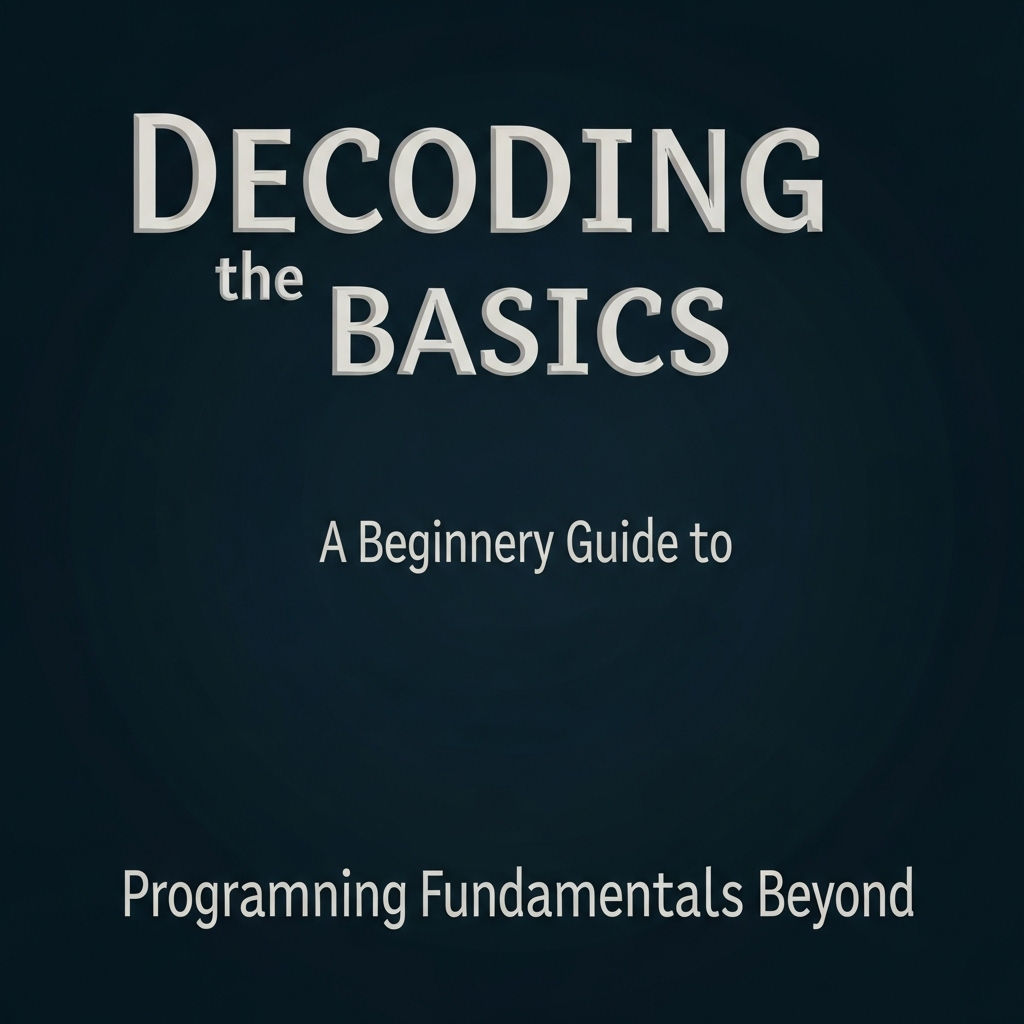
Introduction to Programming Fundamentals
Programming is a fundamental skill in today's technology-driven world, and understanding its basics can open doors to a wide range of career opportunities and personal projects. For beginners, diving into the world of coding can seem daunting, with numerous programming languages, frameworks, and technologies to choose from. However, grasping the fundamentals of programming is essential to building a strong foundation for further learning and exploration. In this article, we will delve into the basics of programming, covering key concepts, data types, control structures, functions, and object-oriented programming, providing a comprehensive guide for those looking to embark on their coding journey.
Understanding Data Types and Variables
Data types are the building blocks of programming, determining the type of value a variable can hold. Common data types include integers, floating-point numbers, characters, strings, and booleans. Variables, on the other hand, are used to store and manipulate these values. For instance, in Python, you can declare a variable x and assign it an integer value 5 using the assignment operator (=). Understanding how to declare, assign, and manipulate variables is crucial for any programming task. Additionally, data type conversion and casting are essential concepts to grasp, as they enable you to change the data type of a variable or value, which is often necessary when working with different data types in a single expression or operation.
Control Structures: Conditional Statements and Loops
Control structures are used to control the flow of a program's execution, allowing you to make decisions, repeat tasks, and skip over code. Conditional statements, such as if-else statements, enable you to execute different blocks of code based on conditions or Boolean expressions. Loops, including for and while loops, permit you to repeat a set of instructions for a specified number of iterations or until a certain condition is met. For example, a simple for loop in JavaScript can be used to iterate over an array of numbers, printing each number to the console. Mastering control structures is vital for creating dynamic, interactive, and efficient programs.
Functions: Reusability and Modularity
Functions are reusable blocks of code that perform a specific task, taking arguments and returning values. They are essential for promoting code reusability, modularity, and readability. By encapsulating a set of instructions within a function, you can call it multiple times from different parts of your program, reducing code duplication and making maintenance easier. Functions can also be used to organize code into logical sections, improving the overall structure and organization of your program. In Python, for instance, you can define a function greet(name) that takes a name parameter and prints a personalized greeting message, which can then be called with different names to produce varying outputs.
Object-Oriented Programming: Classes, Objects, and Inheritance
Object-oriented programming (OOP) is a programming paradigm that revolves around the concept of objects and classes. A class defines a blueprint for creating objects, which are instances of the class, possessing their own set of attributes (data) and methods (functions). OOP principles, such as encapsulation, inheritance, and polymorphism, enable you to create complex, modular, and reusable code. Inheritance, for example, allows a subclass to inherit properties and behavior from a parent class, facilitating code reuse and promoting a hierarchical organization of code. Java, C++, and Python are popular languages that support OOP, and understanding its concepts is crucial for developing large-scale, maintainable applications.
Introduction to Data Structures and Algorithms
Data structures and algorithms are fundamental components of programming, as they enable you to store, manipulate, and process data efficiently. Common data structures include arrays, linked lists, stacks, queues, trees, and graphs, each with its own strengths and weaknesses. Algorithms, on the other hand, are step-by-step procedures for solving problems, such as sorting, searching, and graph traversal. Understanding the trade-offs between different data structures and algorithms is vital for writing efficient, scalable, and optimized code. For instance, a binary search algorithm can be used to find an element in a sorted array, while a hash table can be employed to store and retrieve key-value pairs efficiently.
Conclusion and Next Steps
In conclusion, programming fundamentals are the building blocks of any successful coding journey. By grasping data types, control structures, functions, object-oriented programming, and data structures, you can create a solid foundation for further learning and exploration. As you progress, it is essential to practice writing code, experimenting with different languages, and working on projects that challenge you and help you grow as a programmer. Additionally, staying up-to-date with industry trends, best practices, and new technologies will enable you to stay ahead in the ever-evolving world of programming. With dedication and persistence, you can unlock the doors to a rewarding career in programming and create innovative solutions that make a meaningful impact in the world.
